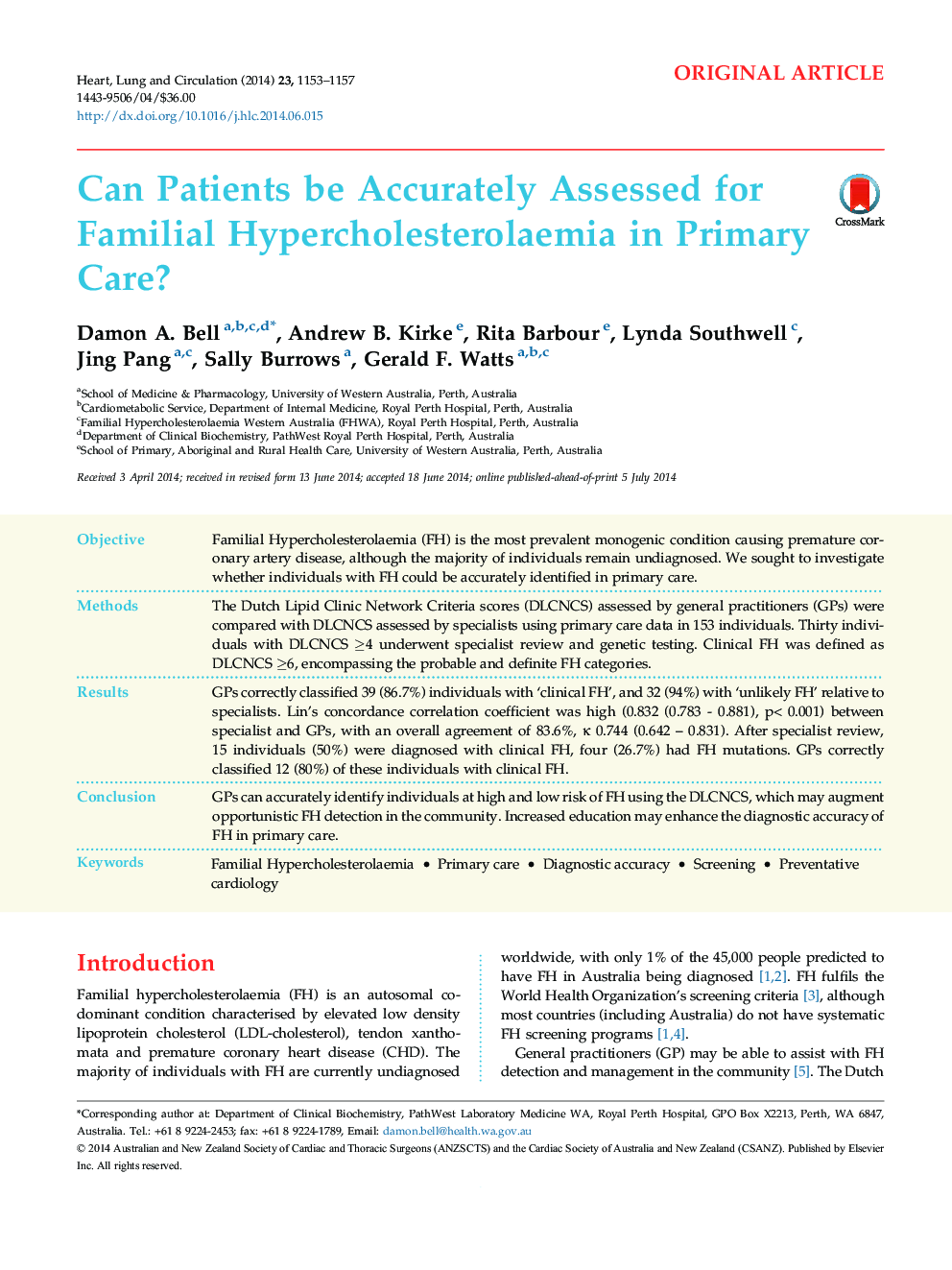| Article ID | Journal | Published Year | Pages | File Type |
|---|---|---|---|---|
| 2916907 | Heart, Lung and Circulation | 2014 | 5 Pages |
ObjectiveFamilial Hypercholesterolaemia (FH) is the most prevalent monogenic condition causing premature coronary artery disease, although the majority of individuals remain undiagnosed. We sought to investigate whether individuals with FH could be accurately identified in primary care.MethodsThe Dutch Lipid Clinic Network Criteria scores (DLCNCS) assessed by general practitioners (GPs) were compared with DLCNCS assessed by specialists using primary care data in 153 individuals. Thirty individuals with DLCNCS ≥4 underwent specialist review and genetic testing. Clinical FH was defined as DLCNCS ≥6, encompassing the probable and definite FH categories.ResultsGPs correctly classified 39 (86.7%) individuals with ‘clinical FH’, and 32 (94%) with ‘unlikely FH’ relative to specialists. Lin's concordance correlation coefficient was high (0.832 (0.783 - 0.881), p< 0.001) between specialist and GPs, with an overall agreement of 83.6%, κ 0.744 (0.642 – 0.831). After specialist review, 15 individuals (50%) were diagnosed with clinical FH, four (26.7%) had FH mutations. GPs correctly classified 12 (80%) of these individuals with clinical FH.ConclusionGPs can accurately identify individuals at high and low risk of FH using the DLCNCS, which may augment opportunistic FH detection in the community. Increased education may enhance the diagnostic accuracy of FH in primary care.
